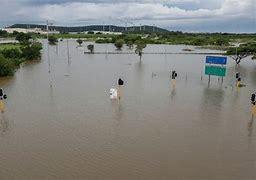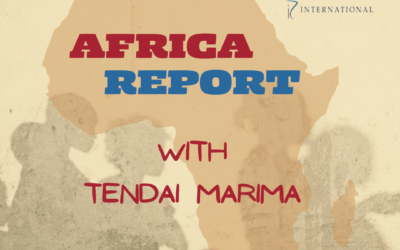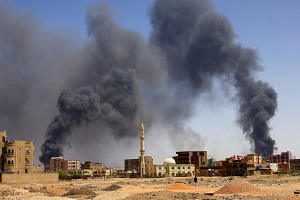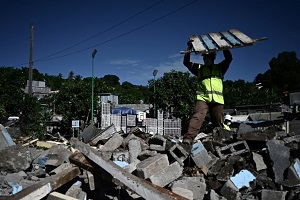
Umm Muhammed Umar
With the highways being flooded, bridges washed away, and severe infrastructure damage in KZN, many people asking if this could have in some way been foreseen, and was this natural or common for this time of the year. Radio Islam spoke to climate expert at the University of KwaZulu Natal, Dr Fazwani Mabudi.
Dr Mabudi said that from a climate perspective the weather system that brought in the heavy rainfall was quite typical and common to South Africa. He said that it was a ‘cut off low pressure system’, which developed naturally on the south coast of the country. Dr Mabudi added that traditionally, it brought in periods of long rainfall, but that the intensity of the rain was exacerbated in this case by warm winds coming in from the Indian Ocean. These winds then intensified the rainfall, resulting in the flooding.
With regards to other provinces, such as Gauteng and Mpumalanga Province having witnessed record high rainfalls this year, Dr Mabudi said, “we oscillate between El Nino and La Nina, and El Nino usually brings with it below average rainfall and drought, and La Nina usually brings with it above average rainfall and incidences of flooding.” He added, “we are in a La Nina cycle, this time around which results in more rainfall than usual.” Dr Mabudi said that the flooding in KZN could not be attributed to climate change: “we need to look at it over a longer period of time, and do some complex calculations to be able to determine whether it is natural weather variability or it is climate change.
When asked if there was a greater loss of life and more damaged sustained because the rain had fallen over a highly populated area, Dr Mabidi explained, “The fact that you have 350 mm of water falling over a 24-hour period, if you put it into context, the annual mean annual rainfall for South Africa is 450 mms in a year. So, receiving above 300 millimetres in a 24-hour period – that’s like 75% of the annual average for South Africa.” He added, “So regardless of where it may have occurred, it would have resulted in flooding. He explained that while it could have occurred in a place that was underpopulated, because of the way the water system was, when it flooded upstream, it would flood downstream. He said that communities or settlements were usually found downstream, so human life and property would have been lost in any event, but perhaps not to this extent were the area affected less densely populated.
Dr Mabudi said that South Africa did have a national early warning system, and that the South African Weather Service had issued a Level Five warning last week Friday, which was escalated on Monday. The Weather Service had expected 150 mm of rainfall to be received within a 24-hour period, which, the professor says, would have still resulted in localized flooding. However, almost double the amount of rainfall than what had been forecast, occurred. He said, “What we need to do is to improve the dissemination of the early warning (system), and focus more on community based early warning, so that we really get the message to reach the people in the affected areas.” He added, “We also need to build their response capabilities, so that they’re able to respond in time and mitigate or reduce the impact of the damage, especially the losses to human life.” He said that was a national project, and that the Weather Service was currently working on developing an integrated climate driven multi hazard early warning system, “So that you might, when the next flood, or whatever extreme event comes, we are better prepared and we are able to respond to save lives, not to provide relief after the fact.” Dr Mabudi said that some funding has been received from the Government of London with respect to the project.







0 Comments